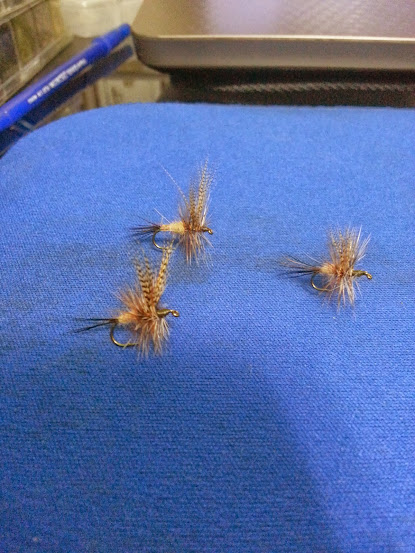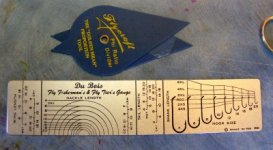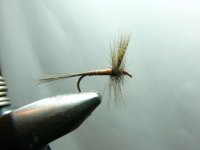jeremymcon
Member
- Joined
- Dec 9, 2012
- Messages
- 600
I splurged on some dry fly hackles not too long ago, and have been tying simple dry flies with no wings, or just a parachute post as a wing for parachute patterns. Well to tie wings from, I recently bought some lemon barred woodduck feathers. Here's my first attempt at a winged March brown dry fly:

A couple problems I had were where exactly to tie in the wing - the fly has an abdomen that is *way* too short and stubby because I tied the wing in too far back. I also had trouble figuring out exactly how long to make the fibers. Some are too short, and some too long.
Also, woodduck feathers are expensive! I bought these from J stockard, and I think if I'm careful I can make 2 flies from one feather, but I paid like $4.50 for 12 feathers! That comes out to like $0.15 a fly just for the wings. I guess that's not that expensive compared to buying them pre-tied, but I could tie 10 times that many wings with a spool of poly yarn that cost half as much.
How important are a dry fly's wings to catching fish, anyway? They're definitely aesthetically pleasing when tied right, but they're a little tricky to tie.

A couple problems I had were where exactly to tie in the wing - the fly has an abdomen that is *way* too short and stubby because I tied the wing in too far back. I also had trouble figuring out exactly how long to make the fibers. Some are too short, and some too long.
Also, woodduck feathers are expensive! I bought these from J stockard, and I think if I'm careful I can make 2 flies from one feather, but I paid like $4.50 for 12 feathers! That comes out to like $0.15 a fly just for the wings. I guess that's not that expensive compared to buying them pre-tied, but I could tie 10 times that many wings with a spool of poly yarn that cost half as much.
How important are a dry fly's wings to catching fish, anyway? They're definitely aesthetically pleasing when tied right, but they're a little tricky to tie.





